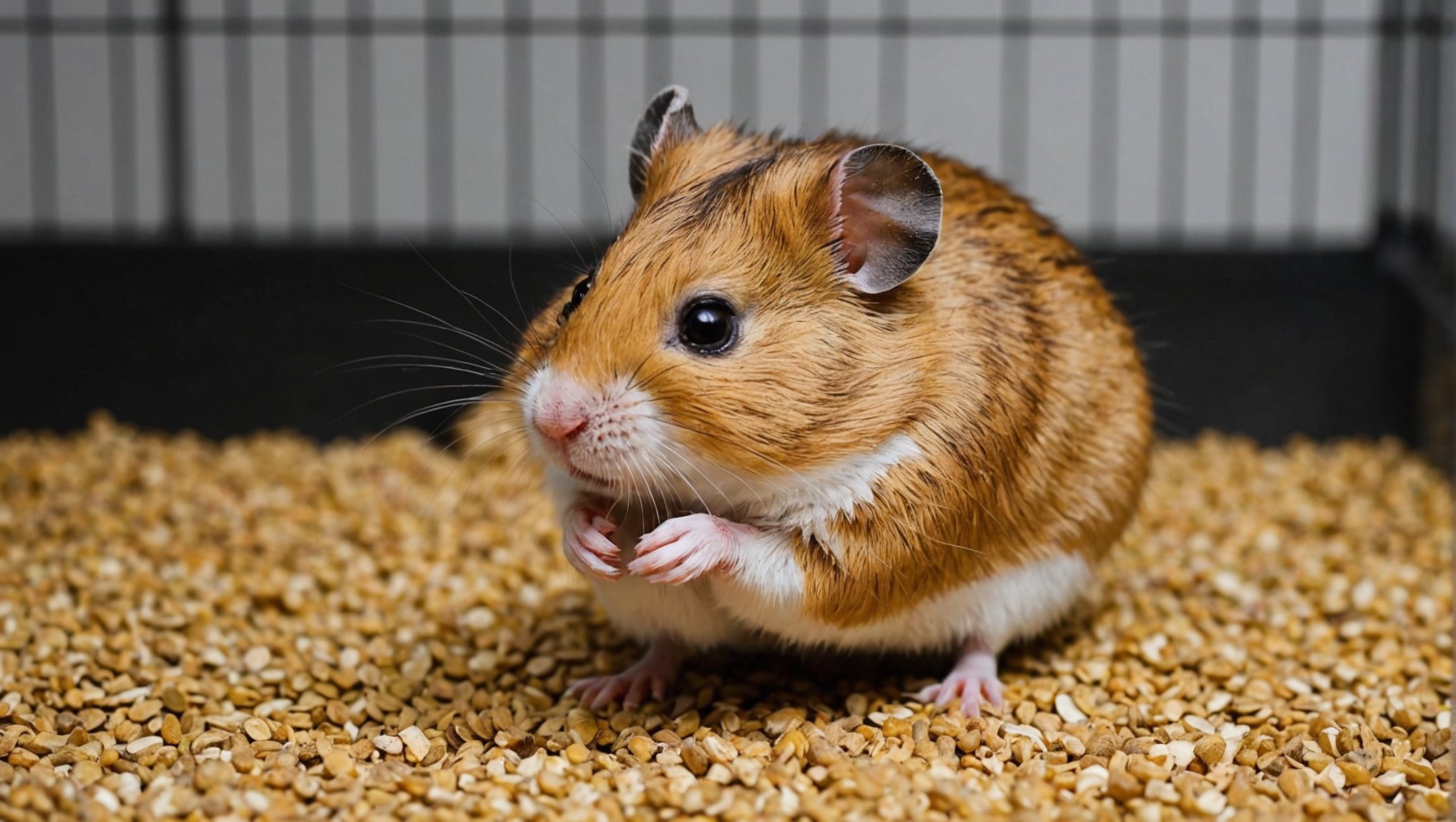Understanding the Needs of Your Pet Hamster
Caring for a pet hamster begins with understanding its natural habitat and the implications for hamster care at home. Wild hamsters originate from desert fringe areas, thriving in dry, open environments. This knowledge is key to recreating a comfortable home setting that meets their environmental requirements. Think bedding material simulating the warmth and softness of sand and a spacious cage allowing for burrowing activities.
A hamster’s physical and psychological needs are paramount. Physically, a balanced diet of grains, fresh vegetables, and clean water are essential for flourishing. Psychologically, activities that enable exercise and exploration support their well-being. Consider toys and structures that satisfy their natural urge to climb and expend energy safely.
Also read : Bringing Home a Kitten: A Guide to Harmonizing Felines in a Dog-Dominated Household
An enriching environment plays a crucial role in a hamster’s life. It includes elements that mimic their natural surroundings, enabling expression of instinctive behaviors, reducing boredom, and improving overall health. Incorporating tunnels and hideouts can encourage activity and provide comfort, serving their solitary nature while keeping them engaged.
By focusing on these specific aspects, pet owners can ensure their hamsters lead a fulfilling life, blending learned concepts from their wild habitats into thoughtful hamster care practices that meet their behavioral needs.
Also to read : Crafting a Wholesome Diet for Your Senior Ferret: A Complete Guide to Nutrient-Rich Nutrition
Selecting the Ideal Cage for Your Hamster
Understanding the various cage types is crucial for creating a suitable habitat design for your hamster. The right choice of hamster housing will ensure your pet’s comfort and well-being.
Comparing Different Cage Types
Different cage types offer unique advantages and disadvantages:
- Glass tanks offer excellent visibility but may lack ventilation.
- Wire cages are great for airflow but watch for spacing that might permit escapes.
- Plastic enclosures often come with modular designs, enhancing activity options but can sometimes restrict air circulation.
Each choice affects the hamster’s habitat design, impacting both ease of maintenance and your pet’s health.
Factors to Consider When Choosing a Cage
Selecting the best hamster housing requires attention to several factors:
- The species and size of your hamster can dictate cage types needed.
- Syrian hamsters, being larger, need more space, whereas dwarf hamsters thrive with less.
- Consider the activity level to ensure your pet has ample room for exploration and exercise.
Importance of Space and Ventilation
Ample space is vital for a hamster’s well-being. Ventilation controls both airflow and temperature, crucial for preventing respiratory issues. A well-designed cage provides both sufficient space and ventilation, ensuring a comfortable living environment for your hamster. Always aim to balance size and airflow when planning your hamster’s habitat design.
Essential Accessories for a Hamster Habitat
Creating a comfortable and enriching environment is crucial for your hamster’s well-being. It’s important to choose the right hamster accessories to enhance their habitat, offering both safety and stimulation.
Must-Have Accessories
When setting up a hamster habitat, some basic accessories are non-negotiable. Key items include a sturdy water bottle to ensure constant hydration and a spill-proof food dish for easy access to fresh food. A hamster wheel is fundamental for exercise, keeping your pet active and healthy.
Safe Bedding and Substrate Options
Selecting the proper bedding is critical for your hamster’s hygiene and comfort. Opt for safe and dust-free substrates like aspen shavings or paper-based bedding to avoid respiratory issues. These materials not only absorb odours efficiently but also mimic the natural environment, allowing for burrowing activities.
Providing Hiding and Climbing Opportunities
To enrich your hamster’s habitat, incorporate tunnels, hammocks, and climbing structures. These enrichment tools satisfy the hamster’s natural curiosity and need for exploration. Tunnels and hammocks offer cosy hiding spots while climbing structures challenge their agility, preventing boredom and promoting mental stimulation.
Equipping your hamster’s habitat with the right blend of essentials and enrichment tools not only meets their basic needs but also keeps them entertained and content.
Creating an Enriching Environment
For hamster enthusiasts, crafting an environment that encourages exploration is vital. Enrichment activities are crucial in stimulating mental and physical health for these small pets. Hamster stimulation can be achieved through thoughtful habitat enhancement, creating a dynamic space.
Types of Enrichment Activities
Interactive toys and puzzles serve as excellent tools for hamster stimulation, enhancing cognitive abilities and problem-solving skills. These activities might include foraging puzzles or small obstacle courses tailor-made for their size. Ensuring variety prevents boredom and keeps them engaged.
Daily Routine for Engaging Your Hamster
A daily routine that includes structured enrichment activities is beneficial. Incorporating playtime and exploration into your hamster’s day encourages physical activity and mental engagement. Regular schedule changes can keep these intelligent creatures occupied and entertained.
Seasonal Activities and Rotating Toys
Changing toys and enrichment activities by season or at regular intervals is essential. This strategy helps maintain the hamster’s interest and promotes exploration. Toys can range from tunnels and wheels to season-specific items that introduce new textures and scents. Rotating toys also aids in preventing habituation, sustaining their curiosity in the ever-evolving habitat.
By focusing on these enrichment strategies, you are ensuring a fulfilling environment for your hamster, one that nurtures its natural instincts and offers continuous mental stimulation.
Safety Precautions for Your Hamster’s Habitat
Creating a secure environment is crucial for your hamster’s safety. It begins with identifying potential hazards that may be present within the habitat.
Common Hazards in a Hamster Habitat
Hamster habitats can inadvertently house dangers that might not be immediately obvious. These include sharp objects, loose wires, or unstable structures within the cage. Moreover, certain toys made from harmful materials can pose significant risks. Ensure that toys and accessories are constructed from non-toxic substances to prevent any injury or illness.
Ensuring Secure Cage Setup
A well-secured cage is paramount. It should feature a robust locking mechanism to prevent escapes. Positioning the cage away from direct sunlight, drafts, and high-traffic areas will contribute to a stable and stress-free space for your pet.
Monitoring and Maintaining Safety
Regular monitoring and updates to the hamster’s habitat are essential. Routinely examine the environment for any signs of wear, such as broken bars or loose components, to prevent accidents. Conduct a thorough hazard identification to ensure no new threats emerge. By continually assessing the surroundings, you enhance your hamster’s safety and well-being.
Create an enriching yet secure environment by being vigilant and proactive in identifying and mitigating hazards.
Common Mistakes in Hamster Habitat Setup
When setting up a hamster habitat, avoiding common pitfalls is essential to ensure your pet’s well-being and happiness.
Overcrowding the Cage
One major mistake is overcrowding the cage. Hamsters need enough space to roam and play. When too many items fill the cage, it restricts movement and increases stress levels, which can negatively impact their health and behavior. A spacious environment is crucial for their physical and mental well-being, allowing them to establish territories and indulge in natural behaviors like digging and burrowing. Carefully selecting items for enrichment without blocking pathways or creating a cluttered space is key to successful hamster care.
Ignoring Species-Specific Needs
Different hamster species, such as dwarf and Syrian, have unique requirements. Overlooking these needs can lead to care errors. For instance, dwarf hamsters typically enjoy socializing with others of their kind, whereas Syrian hamsters are solitary and may become aggressive if housed together. Knowing the specific support your hamster’s species demands allows for better habitat customization, enhancing their quality of life.
Neglecting Regular Cleaning and Maintenance
A fundamental aspect of hamster care is maintaining a clean environment. Failing to regularly clean the cage can lead to a build-up of harmful bacteria, adversely affecting your hamster’s health. Frequent maintenance not only promotes a sanitary living space but also offers an opportunity to monitor your pet’s well-being closely.
Additional Resources for Hamster Care
Embarking on the journey of hamster care can be immensely rewarding but also daunting without the right resources. Learning about hamster habits and understanding their needs can elevate the pet-owning experience. Fortunately, there are abundant hamster care guides and tools available for new and seasoned pet owners alike.
Recommended Books and Websites
Books remain a solid foundation for understanding hamster care. Consider reading “The Hamster Handbook,” offering insights into care and hamster habits. Websites like Pet MD provide comprehensive guides addressing various topics such as nutrition, behaviour, and habitat essentials. Delving into these resources will furnish you with a well-rounded knowledge base.
Local and Online Support Communities
Connecting with communities is another excellent way to enhance hamster care. Forums and social media groups are invaluable for sharing experiences and seeking advice. Global platforms like Reddit’s Hamsters community enable interaction with hamster enthusiasts who readily share tips and answer questions about hamster care guides.
Consulting with Veterinarians
Veterinarians play a crucial role in addressing health concerns. Professional advice is fundamental when questions about hamster health arise. Many clinics offer consultations via phone or email, providing accessible options for pet owner resources. Trusting professional input ensures you meet your hamster’s health and well-being needs efficiently and effectively.






